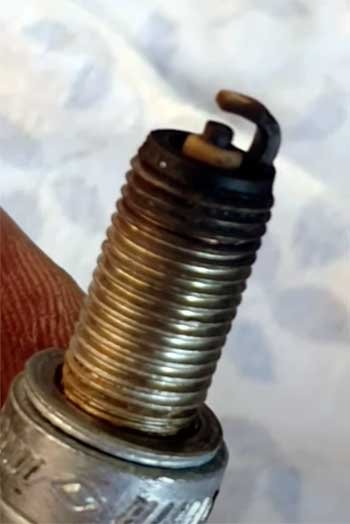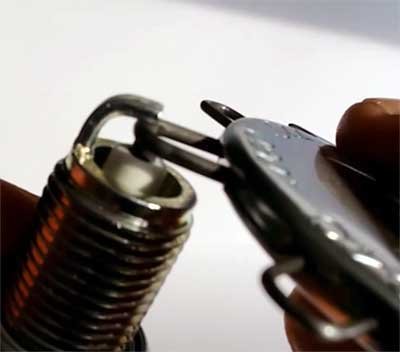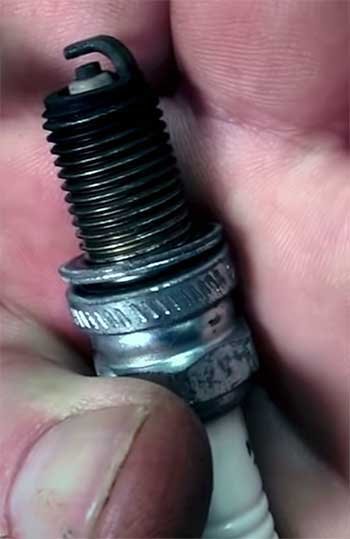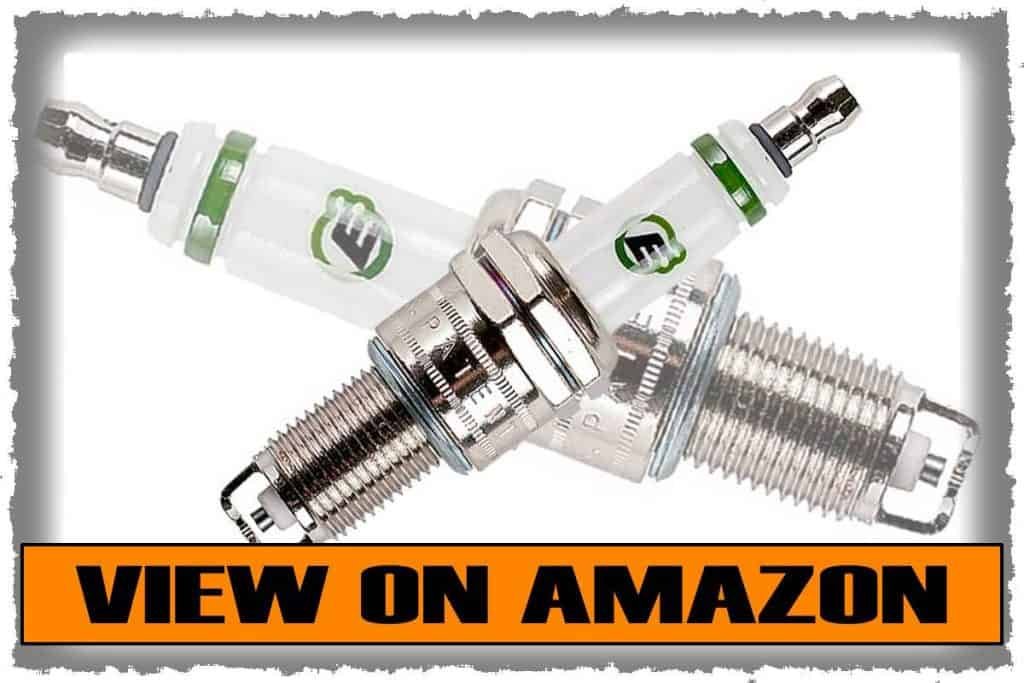Spark plugs are underrated: they’re small, they’re (relatively) cheap, and yet if one of them fails, you’re in for a pretty miserable ride home with a misfiring motor. Spark plugs are one of the least expensive items to replace on your Harley-Davidson, and with all of the different aftermarket spark plug options available, there are some details you will want to think about when you’re ready to shop for a set of replacement spark plugs. In the article below, we’ll dive into what the primary function of a spark plug is, what some of the aftermarket spark plug differences are, why you might need to replace the spark plugs in a Harley-Davidson, and then go over some aftermarket replacement spark plug options for you to consider.
Table of Contents
When and why to replace spark plugs?
The most common reason for replacement boils down to regular maintenance cycles; the average cadence for replacement runs about every 10,000 miles, but this may vary depending on which year and model of Harley-Davidson you own. If the plug is aged but still under the mileage frequency, it’s wise to inspect the plug at a minimum and make sure it does not need replacing.

Another reason for replacing spark plugs would be if one of the spark plugs somehow became fouled, and created a misfire in the engine. When a spark plug becomes fouled, the spark plug can’t ignite the air and fuel that is mixing inside of the cylinder, and this causes the engine to idle off-tempo for a few seconds until the spark plug can re-ignite and get the engine back into its usual rhythm. There may also be some backfiring, or loud popping noises, that come from the exhaust due to the engine running a little too rich with fuel during the misfire. The other symptom of a fouled spark plug happens when you go to start the motorcycle, and it has difficulty turning over when you first start it up, accompanied by the smell of gasoline.
Lastly, improved technology in spark plug materials and design may compel someone to replace their plugs; we see this often with options like the patented E3 spark plugs that are becoming increasingly popular. While the debate continues on whether certain brands return a greater improvement in gas mileage or performance over another brand, the general belief is that a good, new set of plugs may yield a few extra HP – especially if the spark plugs that are currently in your motor are nearing the end of their service life.
What spark plug replacement options are out there?
There are a handful of aftermarket spark plug options that we’ll dive into some additional detail on, including a brief table to give an overview of key items to look for. Before we do, a few words of caution: always check the fitment, gap, and compatibility of a spark plug against your particular engine before ordering. Sadly, spark plugs are not a one-size-fits-all application, and they are manufactured in a slightly different thread and reach dimensions that fit different motor specifications. Additionally, while some spark plug replacements come pre-gapped to the exact specification required by the motor, you will want to double-check the gap against what is listed in your owner’s manual and adjust it accordingly if needed.
Let’s start with the OEM benchmarks. Harley-Davidson offers three OEM spark plug replacement options in the form of an OE spark plug, a Gold edition copper-core spark plug, and the Screamin’ Eagle double-platinum coating performance spark plug. These plugs are available through the parts department at your local Harley-Davidson dealership if you opt for a strict OEM replacement, but the three tiers help provide some insight into the types and materials available; platinum is top-tier, while iridium also takes prominent billing with the Gold edition plug. (Interestingly, Harley-Davidson’s website does not specify what the base OE replacement is composed of.)
Now that we know what options Harley-Davidson offers as stock replacements, let’s consider some aftermarket alternatives to OEM and some of the features and benefits of each, as well as some things to consider that could be considered drawbacks. At the bottom of this section is a handy product chart to help you compare the different spark plug options listed with regards to electrode material, thread/fitment for links listed above, and unique features of each.
1. E3 Spark Plugs E3.34 – Efficient Technology at an Efficient Price
The E3 stands for Energy, Efficiency, and Ecology, and these copper electrode spark plugs feature patented technology and a unique ground electrode design that the company claims can increase power output between 6-12%, improve fuel economy between 4-13%, and reduce emissions. These particular spark plugs come in a 14mm thread, and while you will always want to confirm fitment, this particular listing appears to be compatible with Shovelhead and Evolution motors (pre-1999). At $6.49 USD per plug, these are also currently 45% off of their regular list price of $11.71, making them an excellent value right now; at their full price, there are several other options you could research for your particular engine that may prove to be a better (and more traditionally built) option.
2. Champion RA8HC Spark Plug – Long Established Brand, Long Established Quality
The Champion copper-core electrode spark plug brings the reputation of a brand that has been making motorsports parts for over a century, at a reasonable cost to the consumer, listing at $8.98 USD for each individual spark plug. The RA8HC plug has anti-corrosive properties and a 12mm thread size, and this spark plug appears to be a fit for twin cam motors (1999-2017), as well as the Sportster line going back to 1986. This makes an excellent, like-kind/quality replacement to the OEM spark plugs, but keep in mind that for a couple of dollars more you can potentially make the jump to an iridium plug.
3. Accel 6R12 Spark Plugs – Set of 2 – A High-Performance Focus in a Copper Electrode
These copper-electrode spark plugs are advertised as providing a hotter, larger spark than other brands by use of a U-groove electrode design, resulting in more power available at higher RPMs as well as improving fuel economy and throttle response. At $21.19 USD for a set of two spark plugs, it’s priced a little higher than some of the copper-electrode alternatives but is marketed as a high-performance replacement option for spark plugs that fit Harley-Davidson Twin Cam motors from 1999 onward, and Sportster motors from 1986 on.
4. Denso IXU22 Iridium Spark Plug – Excellent Lifespan for Iridium Spark Plug Options
The Denso iridium spark plugs are marketed as having a lifespan and replacement cadence of up to 30,000 miles in most applications and indicate that even at replacement time, their durability means the wear on the spark plug will only yield minor performance loss. At $10.99 USD per spark plug, these are only slightly more expensive than a copper-electrode option, but they aren’t priced nearly as competitively as other iridium spark plug options. These spark plugs are indicated for use in Twin Cam motors from 1999 on, as well as 1986 and up Sportster motors.
5. NGK Iridium IX DCPR7EIX Spark Plugs – Best Quality for the Value
These spark plugs feature a smaller iridium electrode, which NGK advertises as helping to prolong the life of the ignition system, by way of reduced voltage needs. The shell plating has anti-corrosion features to improve the longevity of the spark plugs, and plugs come with a 14mm thread. These appear to be compatible with most Twin Cam engines manufactured from 1999 to 2016 and are sold for $15.99 in a pair of two plugs – a welcome change (and a very competitively priced set of spark plugs) from other plug options which are sold individually.
Table of Spark Plug Options with Brand, Electrode Material, Thread/Reach/Hex Size, and Additional Features & Benefits
| Brand | Electrode Material | Thread, Reach, and Hex Size | Additional Features and Benefits |
|---|---|---|---|
| E3 Spark Plugs | Copper | 14mm thread 0.750” reach (19.05mm) 13/16” hex size | Patented DiamondFIRE ground electrode advertises a longer electrode life |
| Champion RA8HC | Copper | 12mm thread 0.75” reach (19.05mm) 5/8” hex size | Closest-built replacement to OEM spark plug options |
| Accel 2418 | Copper | 12mm thread 19mm reach 5/8” hex size | Advertised as a high-performance spark plug with a hotter spark due to a U-shaped ground electrode. |
| Denso IXU22 Iridium Spark Plug | Iridium | 12mm thread 19mm reach 5/8” hex size | Iridium-electrode replacement option for Twin Cam and Sportster motors |
| NGK Iridium IX | Iridium | 12mm thread 19mm reach 5/8” hex size | Smaller iridium electrode reduces voltage demands and preserves the life of the ignition system. |
Fuel, Air, and Spark Show – What Do Spark Plugs Do?
For those who may not have a complete understanding of what a spark plug’s primary function is, here is a quick debrief on the air/fuel/spark show that happens inside of combustion motors, and what role spark plugs play in that show.
Combustion motors operate using the holy trinity of fuel, air, and spark to create a small explosion. Fuel is pumped from the gas tank to the fuel injectors or carburetor, and from there the fuel is either sprayed or injected into the cylinder. At the same time, this is happening, air is coming into the engine through the throttle body and air filter and making its way into the cylinder. The infusion of air and fuel collide together in the cylinder, creating an environment that is ripe for a mini-explosion to take place. What ends up igniting the mixture and creating the explosion? That’s where the spark plug comes into play.

If you have a combustion engine, the spark plugs are responsible for igniting the fuel inside the cylinders in your engine. Spark plugs are made of an insulated electrode, wire, and an ignition coil; the spark plug is connected by the ignition coil on one end, and screws into your engine’s cylinder head on the other. The ignition coil creates and carries the voltage current, which triggers the spark in the electrode that’s sitting inside the cylinder head, and that spark ignites the fuel and air mixture that is swirling around in the cylinder. Boom goes the dynamite – that’s combustion.
Now that you have a better understanding of what role spark plugs have in your motorcycle engine and how they function, you might wonder why there’s chatter about the different aftermarket spark plug options, and what the advantages are of each one when used in your Harley-Davidson motorcycle. Spark plugs are available with different electrode materials, which have different mechanical environments in which they perform better or last longer; in some cases, the more expensive options may not always be the best ones for your engine. So, what are those differences?
What is the difference between core electrode materials, and how does it translate to engine performance?
There are typically two schools of thought around what core materials work best in a given vehicle application: the manufacturer, and the people that actually ride and tune the motorcycles. Trying to argue which material works best is like trying to argue that a certain brand of beer is better than another; they all accomplish the same purpose, but some work better in certain environments (or in the case of spark plugs, in different motors) compared to others. There are different materials that are used to create the electrode found in spark plugs, and this is the division that exists in the debate over which spark plug type is better. Here are the three main materials.
Copper
Copper electrodes are probably the most prevalent spark plug option, as it is the cheapest to replace; the flip side to the lower price is the lifespan and longevity, as these spark plugs have a lower melting point and tend to not last as long as their iridium or titanium counterparts. The copper electrodes are usually better conductors compared to iridium and platinum, and are frequently used in modified or high-compression engines; this is due to the cooler temperatures that copper plugs provide when in use, compared to iridium or titanium.
Iridium Alloy
These plugs don’t come nearly as cheap as the copper spark plugs, but what you lose in the upfront cost difference, you get back in mileage and longevity. Due to the higher melting point of iridium, these plugs last much longer than copper spark plugs, but it’s worth noting that they aren’t nearly as conductive as copper plugs. It’s not unheard of to run into issues using iridium spark plugs in modified or high-compression engines, where they are under a heavier load than what would be found in an unmodified stock engine; they tend to fare better in a stock environment where the engine heat is relatively controlled and predictable, compared to a modified engine.
Platinum
The name sounds fancy, but the use cases for platinum spark plugs are pretty specific. Platinum electrodes typically stand up better to long-term corrosion, and in terms of the life span of each plug, it could potentially exceed iridium due to platinum being a harder material. Platinum spark plugs do well in newer engines with electronic ignitions or distributorless ignition systems (DIS), and come in either a single platinum coating or double platinum coating, depending on the manufacturer and what type of engine it is being used in.
In conclusion…

Finding the best replacement spark plug option for your Harley-Davidson doesn’t have to be complicated. There are three types of spark plug materials to choose from – copper, iridium, and platinum. Each material has its unique benefits, depending on whether you’re looking for a replacement that is of like kind and quality to OEM, or you’re seeking a high-performance spark plug that will provide improved gas mileage and power gains over the existing plugs. Also, there are emerging technologies and materials that are surfacing in spark plug replacement options that may influence your decision on which brand, material, or type to go with.
When you shop for replacement spark plugs, always double-check the fitment for your particular engine before purchasing a set of spark plugs. Remember that higher price tags may not always mean a better product, as there are some competitively-priced options within each tier of material that may serve as an excellent replacement option. Using a premium material such as platinum has very specific use cases, and while it may be tempting to splurge on a set of platinum plugs, they may not be the optimal replacement option for your motor. Ultimately, a fresh set of spark plugs can help your motorcycle to perform better, put out slightly more horsepower, and improve gas mileage efficiency, helping to make your journey out on two wheels a smoother one.





